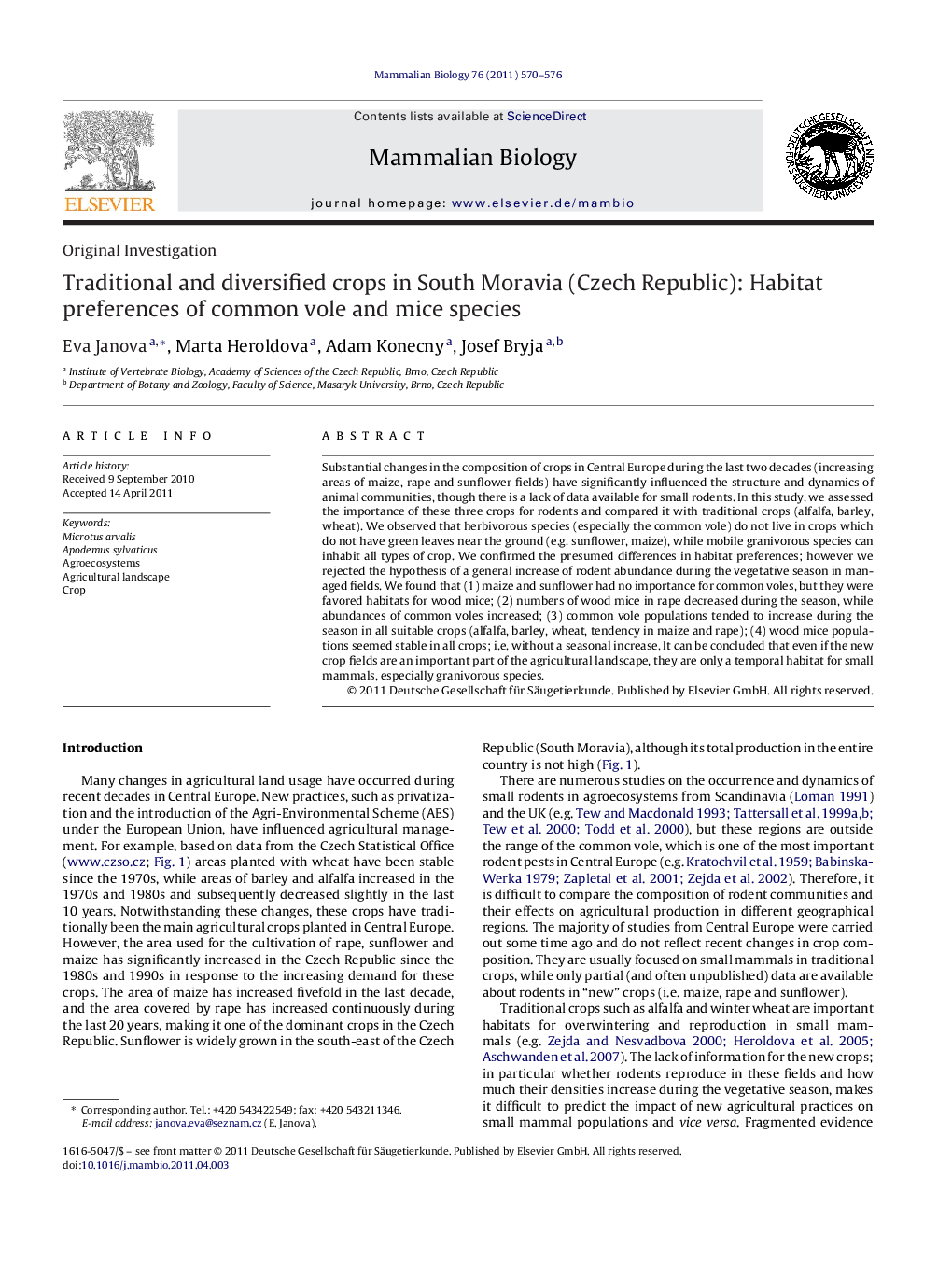| Article ID | Journal | Published Year | Pages | File Type |
|---|---|---|---|---|
| 10955852 | Mammalian Biology - Zeitschrift für Säugetierkunde | 2011 | 7 Pages |
Abstract
Substantial changes in the composition of crops in Central Europe during the last two decades (increasing areas of maize, rape and sunflower fields) have significantly influenced the structure and dynamics of animal communities, though there is a lack of data available for small rodents. In this study, we assessed the importance of these three crops for rodents and compared it with traditional crops (alfalfa, barley, wheat). We observed that herbivorous species (especially the common vole) do not live in crops which do not have green leaves near the ground (e.g. sunflower, maize), while mobile granivorous species can inhabit all types of crop. We confirmed the presumed differences in habitat preferences; however we rejected the hypothesis of a general increase of rodent abundance during the vegetative season in managed fields. We found that (1) maize and sunflower had no importance for common voles, but they were favored habitats for wood mice; (2) numbers of wood mice in rape decreased during the season, while abundances of common voles increased; (3) common vole populations tended to increase during the season in all suitable crops (alfalfa, barley, wheat, tendency in maize and rape); (4) wood mice populations seemed stable in all crops; i.e. without a seasonal increase. It can be concluded that even if the new crop fields are an important part of the agricultural landscape, they are only a temporal habitat for small mammals, especially granivorous species.
Related Topics
Life Sciences
Agricultural and Biological Sciences
Animal Science and Zoology
Authors
Eva Janova, Marta Heroldova, Adam Konecny, Josef Bryja,
